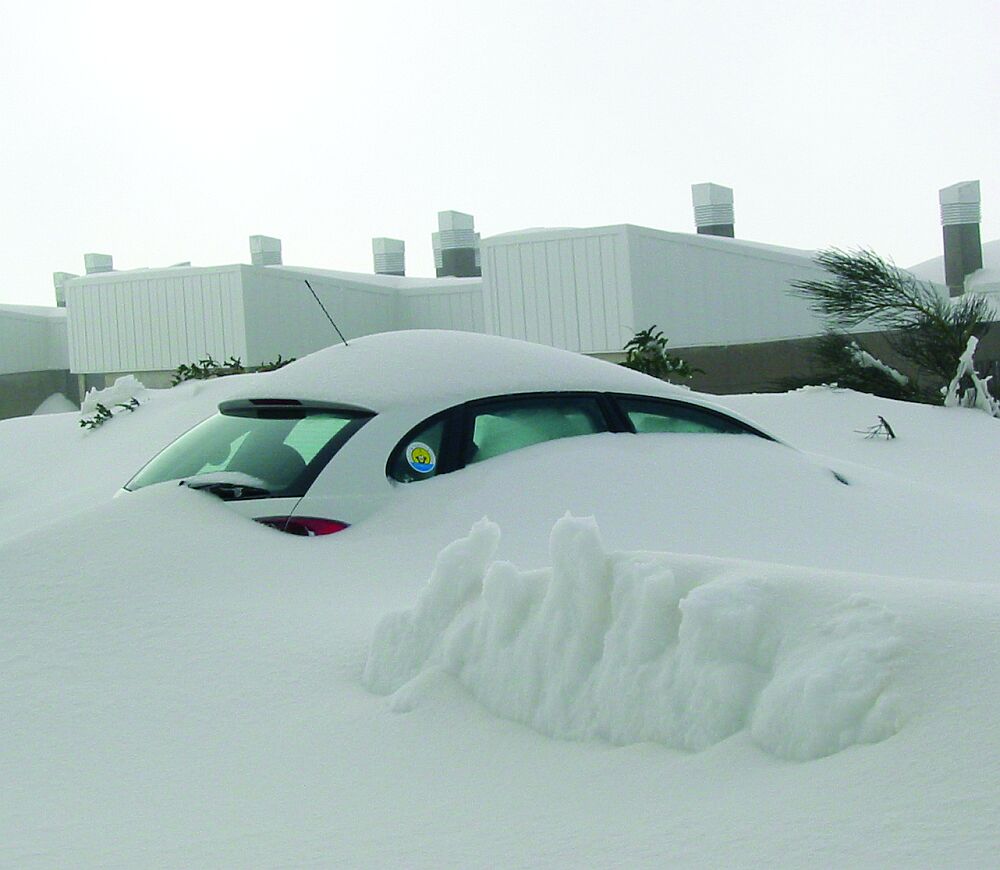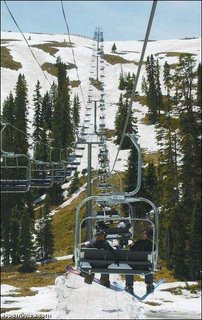
One of my favorite Tahoe places, Northstar, is expanding its terrain. In some ways, it is very much like Okemo. The mountain's character and clientele is similar to our local Vermont favorite.
Northstar Expanding


Oddball winter weather hurts ski industry
June 21, 2006
By Bruce Edwards : Rutland Herald Staff
Faced with challenging weather, skier visits in Vermont fell 6 percent this season, the Vermont Ski Areas Association announced Tuesday at its annual meeting.
The state's 17 downhill ski areas recorded 4,147,467 skier visits for the 2005-06 season compared to last year's 4.4 million visits, the association said. Despite the decline, Vermont remains the No. 3 ski state behind Colorado and California.
"The past season was certainly a challenging one for the industry," said Parker Riehle, president of the Vermont Ski Areas Association, in a statement. "With our resorts' ever-improving snowmaking and grooming capabilities, we were able to survive the wildly variable weather patterns that seemed to hit hardest during our key holiday periods and finish the season stronger than many had predicted."
While overall skier visits were down 6 percent in the state, some resorts fared worse than others, including Killington/Pico, which saw its skier visits tumble by 19 percent.
Skier visits at Mount Snow in Dover dropped nearly 18 percent. Both resorts are owned by American Skiing Co., which reported last week an overall decline in skier visits at its seven resorts of 6.9 percent. Skier visits at its five Eastern resorts fell 15 percent.
The company, which posted a fiscal third quarter profit, said its eastern resorts "were challenged by adverse weather conditions for much of the latter half of the ski season."
"It was the toughest season we've faced weather-wise in Killington's history," said Killington spokesman Tom Horrocks in an interview last week. "(There were) numerous freeze/thaw cycles, rain on key weekends, like Martin Luther King weekend and Presidents (Day) weekend, and that has a pretty significant impact on the drive-up skier market."
Thanks to Vermont's reputation, however, Riehle said Vermont fared "much better than the rest of the Northeast, which was down 9 percent from last year."
The ski industry is considered one of the state's key economic drivers contributing more than $1.5 billion annually to the state's economy.
At the association's annual meeting Tuesday, held at Killington Resort, longtime ski industry veteran Dave Wilcox and sports event producer Bernie Weichsel were honored for contributions to the state's ski industry. Wilcox received the Industry Achievement Award and Weichsel received the Friend of the Industry Award.
Vermont skier visits for the past five seasons:
2005-06, 4.1 million.
2004-05, 4.4 million.
2003-04, 4.2 million.
2002-03, 4.4 million.
2001-02, 4.1 million.
 with Mason & Morse who had a couple of Prospector shares listed for $18,000 apiece. Both sold. "It's just this secret that's out now."Earlier this month, one share in each of two different units went to the same buyer for a total of $45,000. The two shares come with six weeks of use altogether, including the Christmas holiday this year.Another owner has offered four shares for sale in three different units. The total package is $300,000, but the deal offers 12 prime-time weeks, including Christmas and the Aspen Food & Wine weekend.The timeshare hotel on Hyman Avenue has 19 one-bedroom, two-bath condos, though the units are also each furnished with a Murphy bed and sleeper sofa to accommodate additional guests.When it opened in 1983, with 285 shares available to sell, it was the first of its kind in Aspen. More than two decades later, six of those original shares - all for low-demand weeks - are still available, according to manager Scott Kirkwood. But when he took on oversight of The Prospector five years ago, there were roughly 50 unsold shares."The Prospector is doing better than it's ever done," Kirkwood said. "It's the best deal in town and has been for quite a while. People are buying two, three and four [shares], and they're looking for more.
with Mason & Morse who had a couple of Prospector shares listed for $18,000 apiece. Both sold. "It's just this secret that's out now."Earlier this month, one share in each of two different units went to the same buyer for a total of $45,000. The two shares come with six weeks of use altogether, including the Christmas holiday this year.Another owner has offered four shares for sale in three different units. The total package is $300,000, but the deal offers 12 prime-time weeks, including Christmas and the Aspen Food & Wine weekend.The timeshare hotel on Hyman Avenue has 19 one-bedroom, two-bath condos, though the units are also each furnished with a Murphy bed and sleeper sofa to accommodate additional guests.When it opened in 1983, with 285 shares available to sell, it was the first of its kind in Aspen. More than two decades later, six of those original shares - all for low-demand weeks - are still available, according to manager Scott Kirkwood. But when he took on oversight of The Prospector five years ago, there were roughly 50 unsold shares."The Prospector is doing better than it's ever done," Kirkwood said. "It's the best deal in town and has been for quite a while. People are buying two, three and four [shares], and they're looking for more. In addition to ski season starting in Chile -- and someone, somewhere enjoying sports in the mountains -- I have some other good news to share.
In addition to ski season starting in Chile -- and someone, somewhere enjoying sports in the mountains -- I have some other good news to share. “The lack of rain has not affected us. In roughly 50% of our years of operation, we have not had any snow by June 1” said Ski Center Association President Miguel Purcell. Purcell also stressed that most ski resorts already have a solid 60 centimeter snow base as a result of last weekend’s heavy rainfall, and are expecting greater precipitation within the next few days.
“The lack of rain has not affected us. In roughly 50% of our years of operation, we have not had any snow by June 1” said Ski Center Association President Miguel Purcell. Purcell also stressed that most ski resorts already have a solid 60 centimeter snow base as a result of last weekend’s heavy rainfall, and are expecting greater precipitation within the next few days.

I guess the mildly interesting part is how much more accessories were sold compared to equipment. Also it's interesting to see how much helmet sales have grown. I know I've started keeping a bunch around personally.
Skiing sure requires a lot of stuff.

 Back in 1996, some friends and I went out to Snowbird for some post Easter skiing. It was pretty good, but the snow conditions were not as good as what they enjoyed this year, so despite the coverage, the surface conditions were kind of icy/crusty -- especially where it was not groomed. I remember having to bail out of Regulator Johnson because my skis were too dull to hold an edge on it; fortunately there was a groomed bypass that was right by it.
Back in 1996, some friends and I went out to Snowbird for some post Easter skiing. It was pretty good, but the snow conditions were not as good as what they enjoyed this year, so despite the coverage, the surface conditions were kind of icy/crusty -- especially where it was not groomed. I remember having to bail out of Regulator Johnson because my skis were too dull to hold an edge on it; fortunately there was a groomed bypass that was right by it.
 Once upon a time, Basset Hounds could fly as this primeval example demonstrates. They would flap their ears and slowly take wing. Sadly, like turkeys, they grew too heavy and now waddle along at low altitudes. When you hear them baying, it's their anscestral way of crying for the freedom of flight, now denied to their heavy limbed decendants.
Once upon a time, Basset Hounds could fly as this primeval example demonstrates. They would flap their ears and slowly take wing. Sadly, like turkeys, they grew too heavy and now waddle along at low altitudes. When you hear them baying, it's their anscestral way of crying for the freedom of flight, now denied to their heavy limbed decendants.